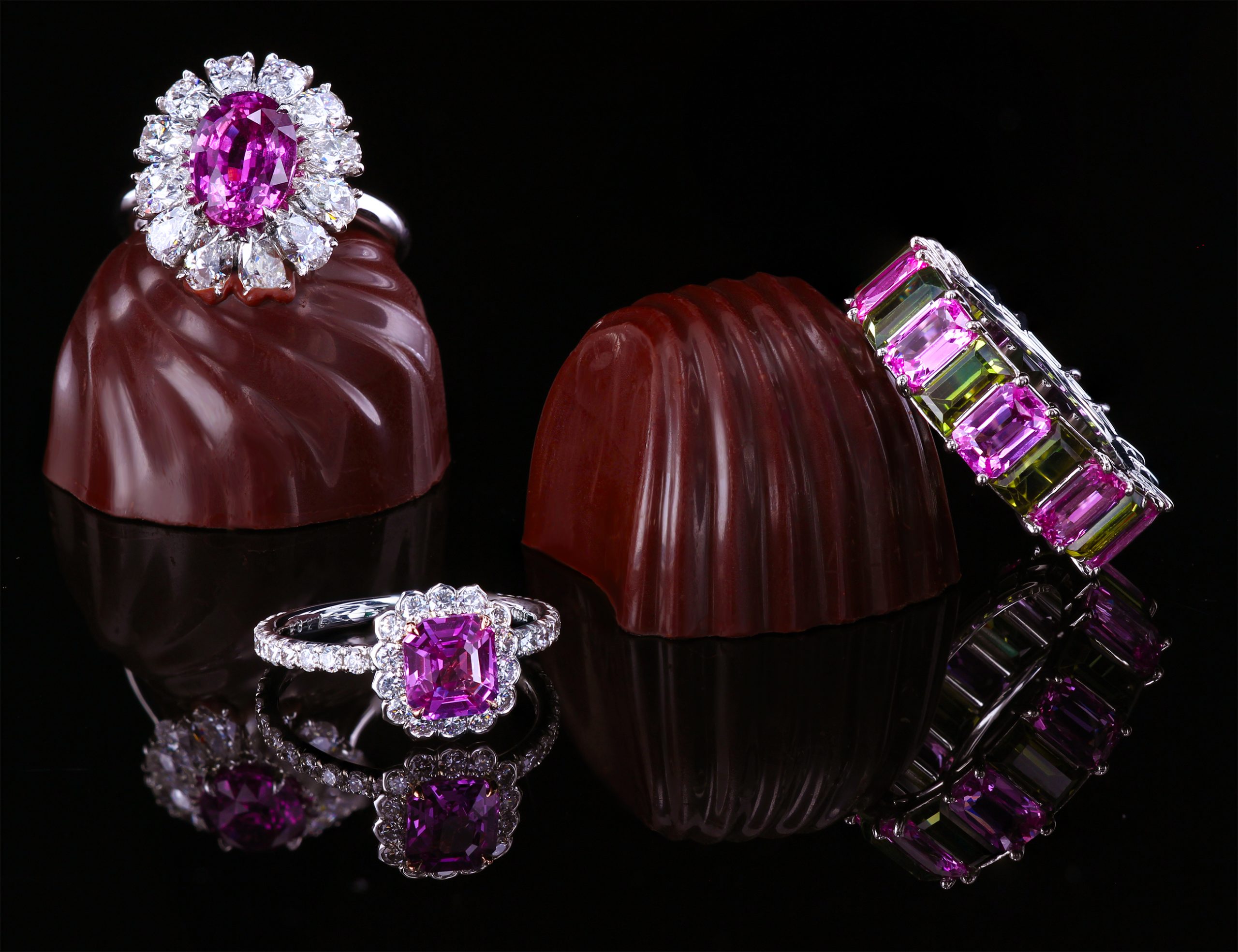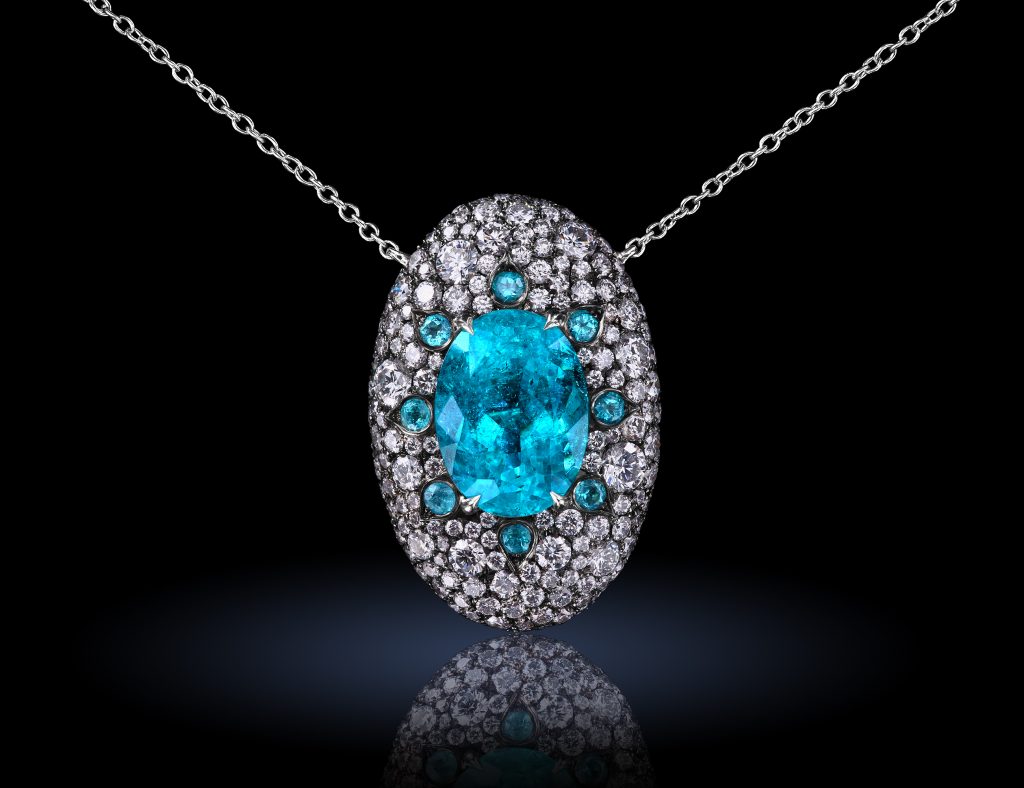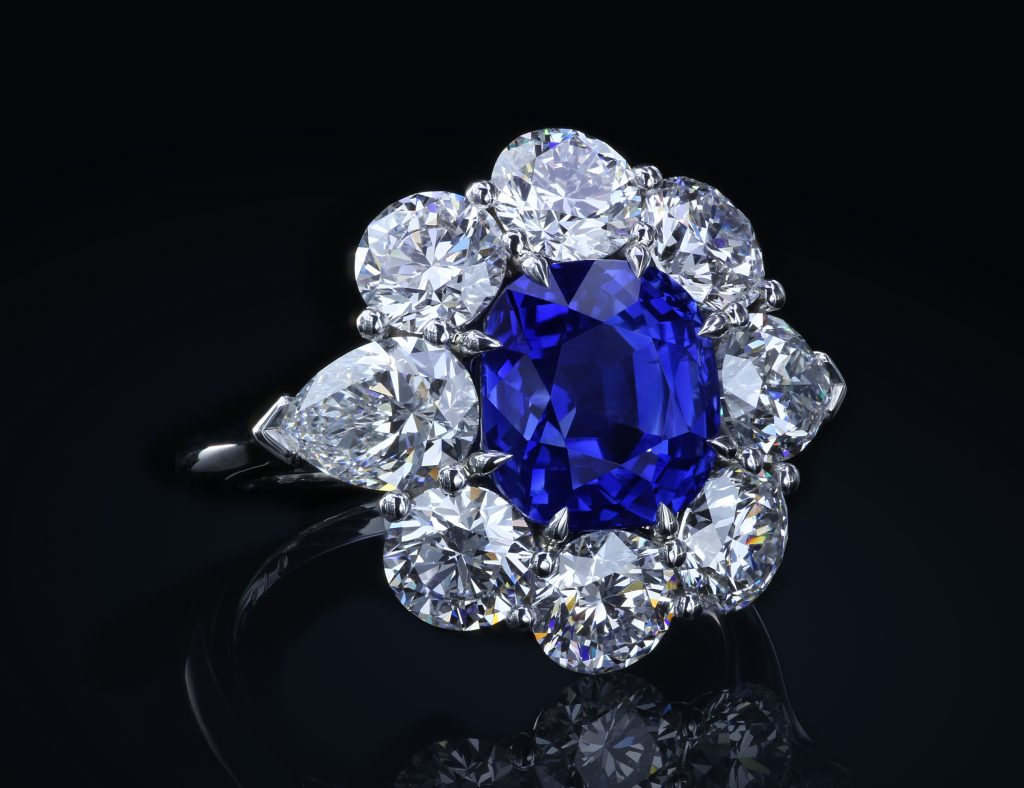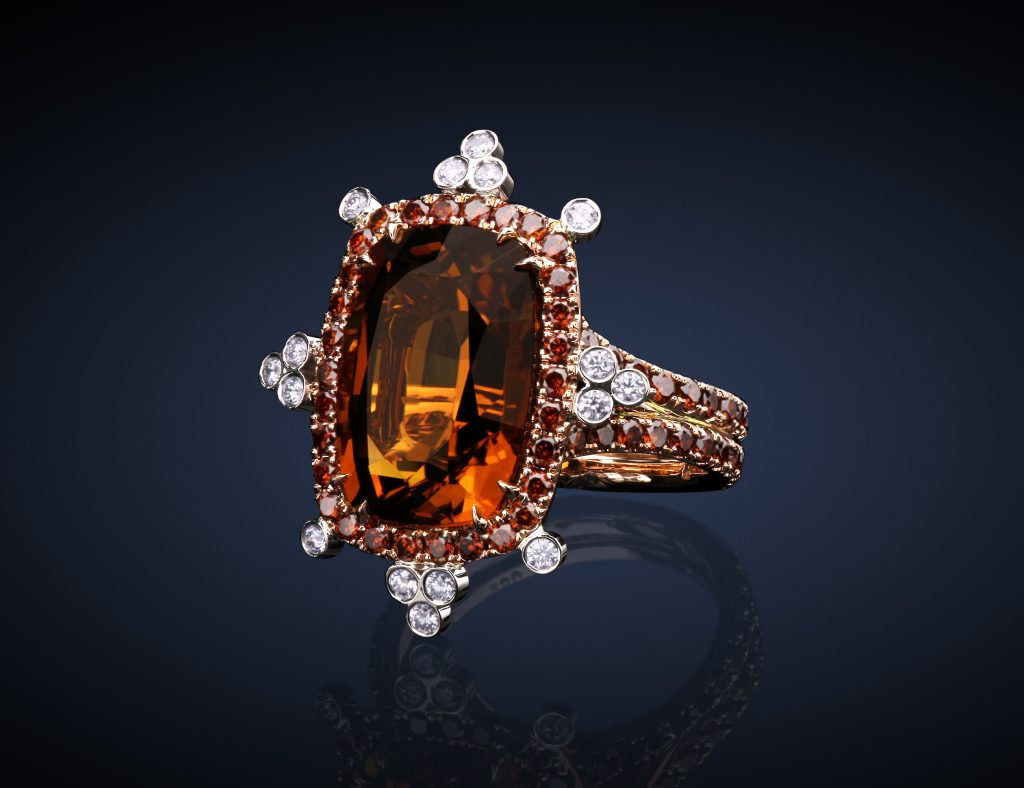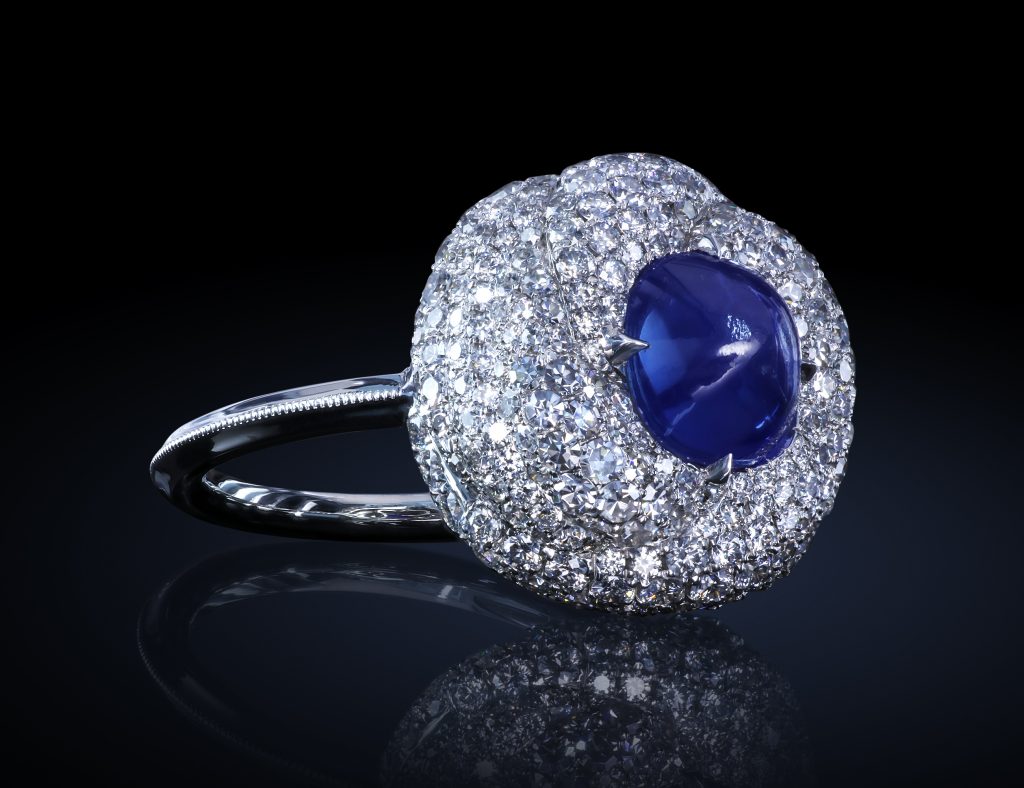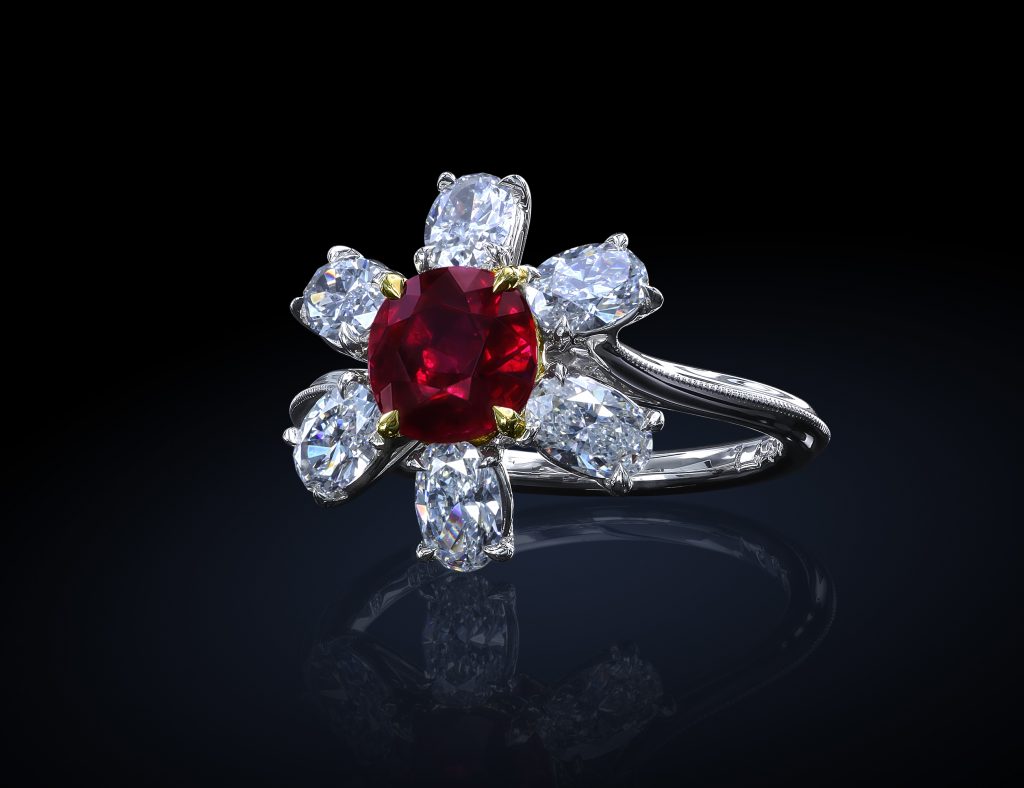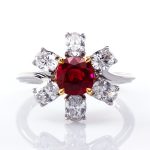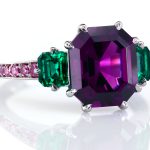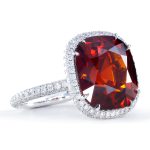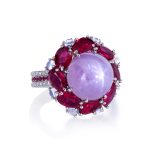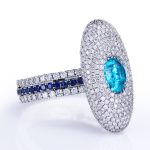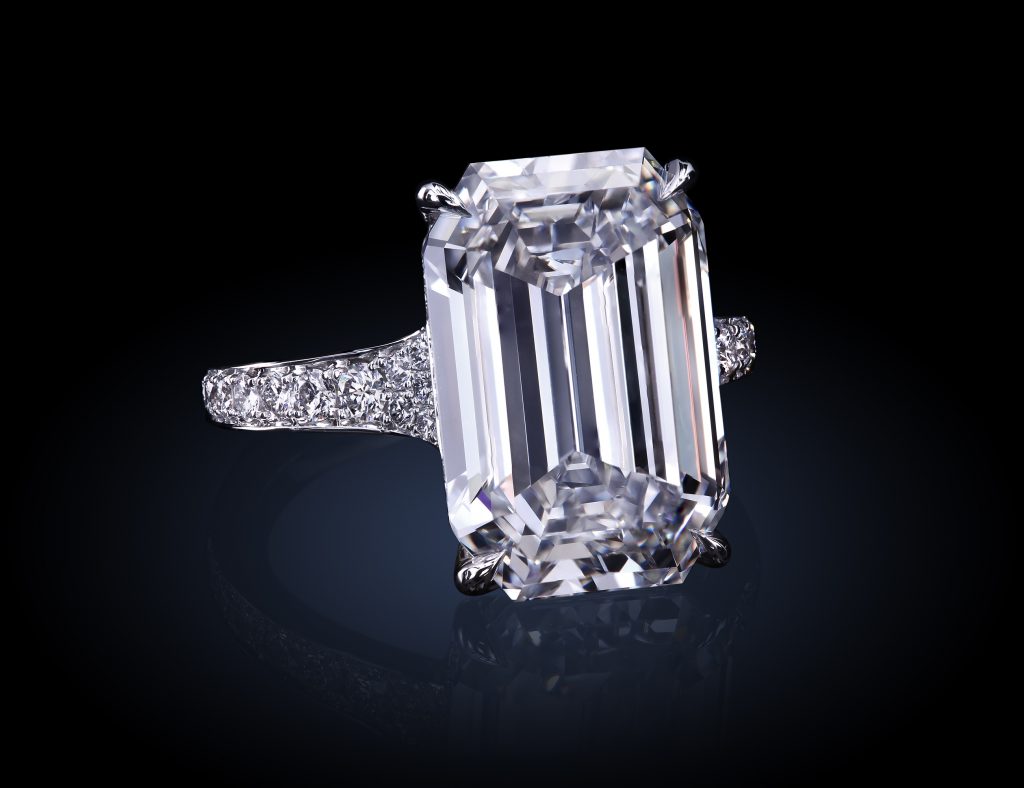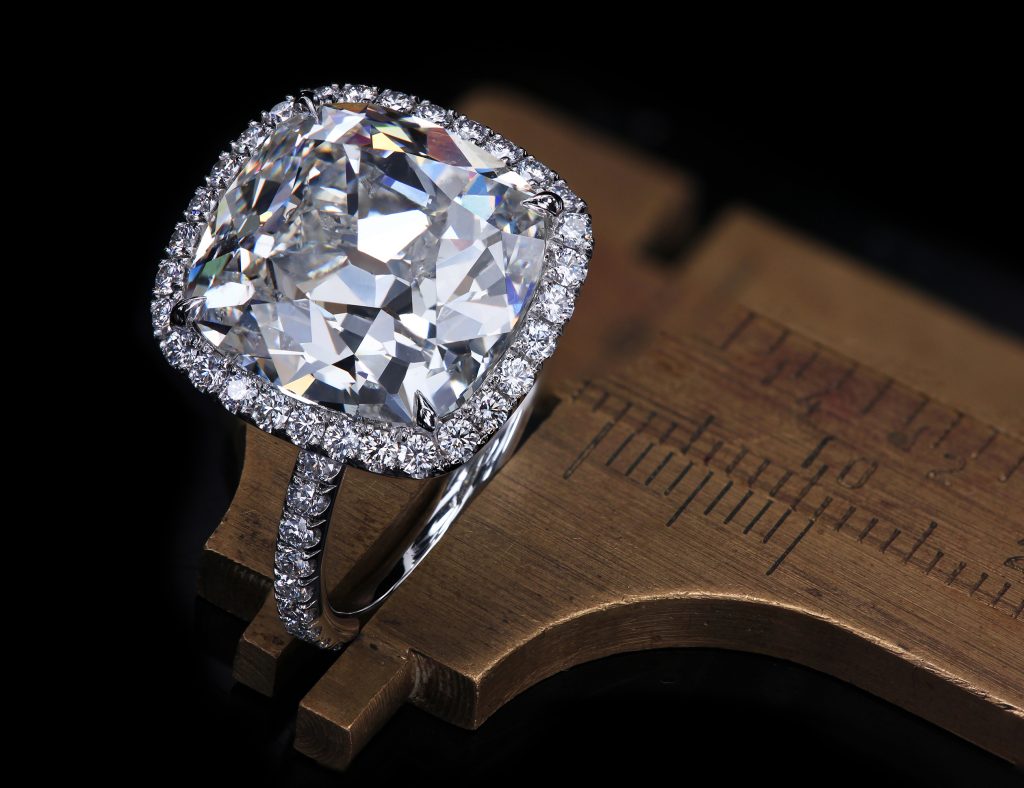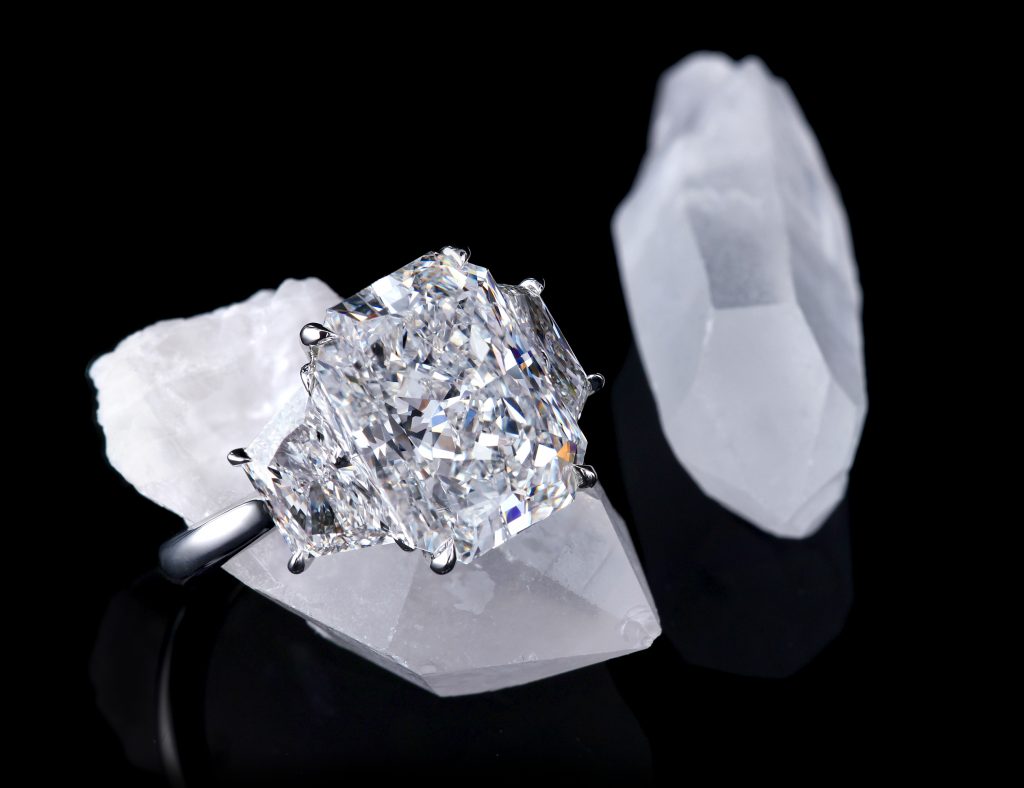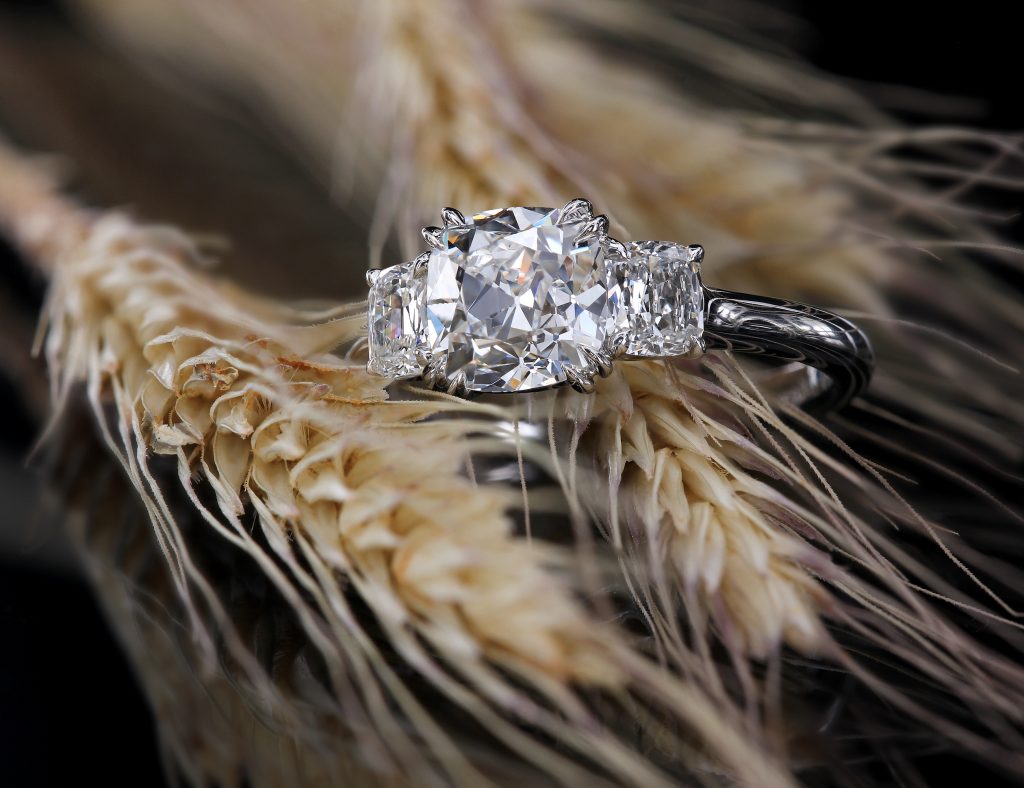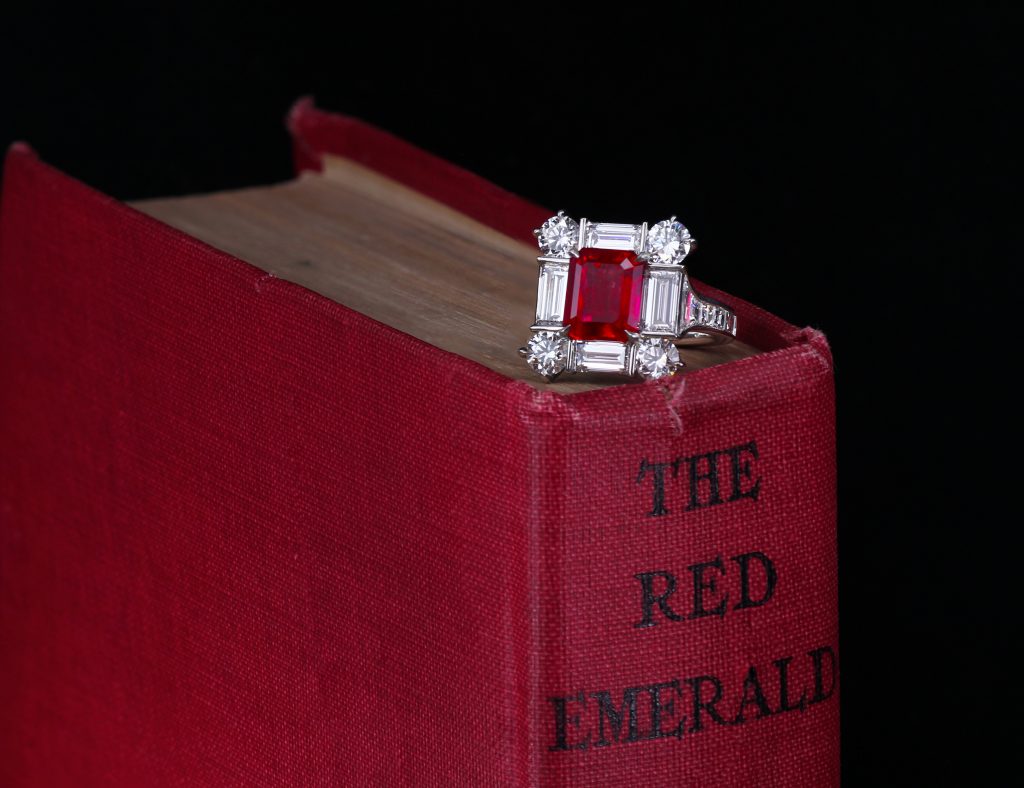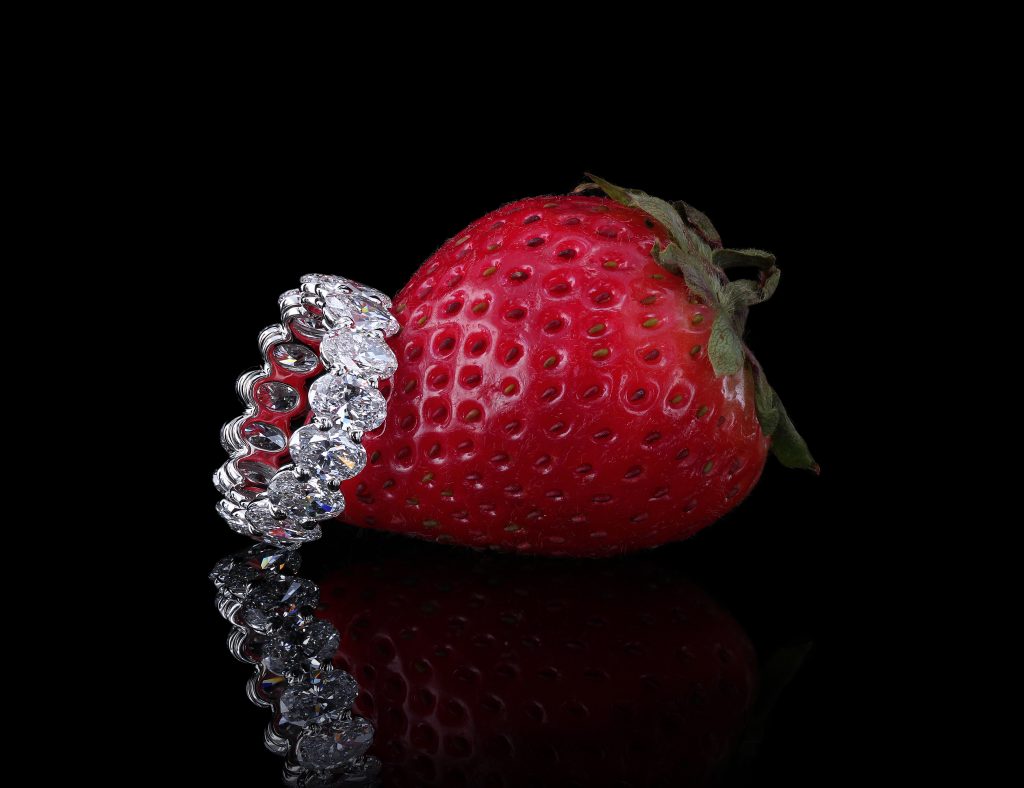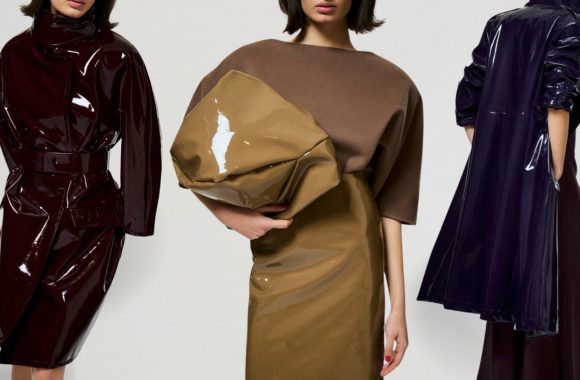di Veronica Sheynina
Leon Mege: “Anche nella società relativamente democratica di oggi, il simbolo dello status è sempre un diamante”
Un gioielliere russo, immigrato negli Stati Uniti durante il periodo comunista, Leon Mege è ora il proprietario di una delle più famose case di alta gioielleria a Manhattan. I nomi dei suoi clienti non possono essere rivelati, ma i loro ordini, come un ciondolo con il diamante da 89 carati, creato da Mege, parlano da soli.
D-Art ha incontrato il gioielliere per parlare del “sogno americano” e dell’affascinante mondo dell’alta gioielleria.
Nato in Unione Sovietica, sei immigrato negli Stati Uniti durante gli anni del comunismo, e ora sei il proprietario di una gioielleria più rinomata di New York. La tua storia sembra davvero il sogno americano…
Realizzare il sogno americano vuol dire lavorare tanto, sodo, con molta tenacia e devozione. In tutti questi anni non ho mai lavorato meno di 50 ore a settimana, più spesso 60-70 ore. Sembra irreale, ma questo è quello che ci vuole per costruire un marchio e crearsi la reputazione. New York è un posto fantastico per chiunque abbia un sogno di iniziare un’attività e farsi la strada. E’ un luogo pieno di energia e sono stato fortunato ad approdare in questa città quando sono venuto negli USA per la prima volta.
Cosa ti ha spinto a percorrere la strada rischiosa, fare l’imprenditore, il gioielliere, invece di provare un percorso da immigrante più comune? Hai mai avuto dei dubbi? Ti sei mai chiesto “E se non dovesse funzionare?” Hai mai avuto paura di fallire?
Lavorare da solo a New York non è affatto rischioso. New York è una città enorme con tantissime opportunità di lavoro per una persona che lavora sodo, quindi non corri mai il rischio di essere lasciato fuori.
L’alta gioielleria è un campo creativo, con l’enfasi sull’artigianato. I bravi gioiellieri sono sempre richiesti. L’esperienza è la cosa più importante, e un gioielliere virtuoso non può essere facilmente sostituito. Un datore di lavoro è più dipendente dai suoi gioiellieri “star” che il contrario.
Il momento in cui mi sono posto la domanda “Che cosa succederà se non dovesse funzionare?” è arrivato quando ho assunto altre persone.
Fino a quel momento non avevo dubbi sul mio successo, ma una volta che la crescita del business richiedeva più personale, dovevo imparare a gestire gli altri, e non era per niente facile.
Parliamo del tuo lavoro. Leon Mege lavora con le pietre rare e diamanti davvero enormi. Qual è il diamante più grande con cui hai mai lavorato? Quanto potrebbero costare questi gioielli?
Ogni ordine viene tenuto in completo blackout. Non posso menzionare le pietre specifiche altrimenti potrei violare la privacy dei miei clienti.
I più grandi e importanti rivenditori di diamanti e pietre preziose si trovano a New York, quindi qui capita di lavorare con delle pietre enormi.
Ad esempio, in questo momento sto facendo un paio di orecchini con diamanti di circa 30 carati ciascuno. Il prezzo? Poco meno di 3 milioni di dollari. Anni fa ho realizzato un ciondolo con un diamante D-flaw da 89 carati del valore di circa $ 18 milioni.
Capisco il fascino che le persone provano per le pietre enormi, anche se per me, una pietra da 50 carati non sembra così bella come un “modesto” diamante da 10 carati ben tagliato.
In realtà lavorare con le pietre grosse è più facile.
Di recente si sente molto parlare dei diamanti sintetici. Alcuni dicono che la loro qualità è la stessa dei diamanti naturali, ma il costo è molto più accessibile. Quali sono le differenze tra un diamante reale e un diamante artificiale? Come uno può capire se un diamante è artificiale?
Attualmente solo un laboratorio di diamanti come GIA può distinguere pietre naturali da quelle sintetiche. Non vi è alcuna differenza fisica tra la pietra sintetica e quella naturale tranne le minuscole tracce chimiche. Per un consumatore, un diamante sintetico diventerà una buona scelta quando i prezzi scenderanno. Attualmente, il prezzo dei diamanti sintetici è ancora troppo alto. Un diamante naturale è una scelta migliore.
Il platino o l’oro bianco: cosa preferisci? Quali sono le differenze?
L’oro bianco è semplicemente un sostituto del platino. È adatto alla fusione ma non è raccomandato per la fabbricazione manuale. Il platino è naturalmente bianco, è un metallo denso, non ossidante, auto-brunito di scelta per il lavoro su misura. Il platino è più puro – è il 95% di platino puro contro il 75% nell’oro 750.
A cosa bisognerebbe prestare l’attenzione quandosi acquista un gioiello in modo da distinguerne uno di qualità?
Il modo migliore per esaminare la qualità di un pezzo è capovolgerlo ed esaminarlo attentamente. La freschezza e la finitura di ogni parte sono essenziali. Tutte le parti devono avere una calzata precisa.
Parlaci delle tendenze della moda in gioielleria?
Le tendenze in gioielleria sono fortemente influenzate dalle celebrities. Sfortunatamente essere famosi non garantisce un buon gusto. Le persone che cercano di emulare il kitsch finiscono con l’indossare gioielli inguardabili.
Per fortuna, i modelli classici stanno lentamente tornando di moda: i tagli di diamanti importanti come il taglio francese, il cuscino Asscher e Antique.
In questo momento, stiamo assistendo a un minore micro-pave in quanto i consumatori stanno tornando al look classico. C’è un interesse per gli anelli di fidanzamento che sono meno ornati e un po’ più casual e senza pretese come gli anelli classici a tre e cinque pietre.
Trapezi, proiettili e scudi sono le pietre laterali più comuni.
Gli aloni stanno ancora andando forte, ma l’alta gioielleria sta abbracciando semplici solitari con una sola pietra.
Parlando di gioielli da uomo, quali sono i pezzi più richiesti?
I maschi americani raramente indossano i gioielli, ad eccezione dei membri della comunità hip-hop che preferiscono enormi catene e croci vistose. Non lavoriamo con questo tipo di gioielli. Facciamo tanti gemelli e fedi nuziali da uomo.
La tua arte si basa sulla tradizione europea dei gioielli. Qual è la differenza tra la tradizione europea e quella americana?
Gli americani, in generale, tendono a trattare i gioielli come qualcosa di usa e getta, proprio come trattano le stoviglie o addirittura le case. Pertanto, la qualità della gioielleria è secondaria rispetto al suo costo. Non significa affatto che non ci sono americani che apprezzano la qualità e l’artigianalità a un costo premium, altrimenti la mia azienda fallirebbe.
Tuttavia, in Europa, la tradizione di passare i gioielli dai genitori ai figli è più diffusa.
Pensa che i diamanti siano ancora i migliori amici delle ragazze?
Senza alcun dubbio. Anche nella società relativamente democratica di oggi, il simbolo di status è sempre un diamante.
ENGLISH VERSION
Veronica Sheynina
Leon Mege: “Even in today’s relatively democratic society, the ultimate status symbol is a diamond”
A Russian born jeweler, immigrated to the USA during the communist period, Leon Mege is now running one of the most noted high-end jewelry houses in Manhattan. The names of his clients remain private, but their impressive orders, like a 89-carat diamond pendant, created by Mege, speak for themselves. D-Art has met the jeweler to talk about the “American dream”and about the fascinating world for high jewelry.
Born in Russia, immigrated to the USA during the communist years, now the owner of a successful jewelry house in New York. The story of Leon Mege sounds like an American dream. Tell us more about your story?
The American dream involves a lot of grit, tenacity, and hard work. All these years I never worked less than 50 hours a week, more often 60-70. It sounds unreal, but this is what it takes to build a brand and its reputation. New York is a fantastic place for anyone with a dream to start a business and get noticed. New York is a vibrant place that is full of energy and I was lucky to land in this city when I first came to this country.
What made you fancy for a risky choice of working on your own as an exclusive jeweler in America instead of trying some more common immigrant’s path? Did you ever have any doubt? Did you ask yourself “What if it doesn’t work”? Did you ever have a fear of failing?
Working on your own in New York is not risky at all. New York is a huge city with tons of jobs available to a hard working person, so you never run a risk to be left out. The upward mobility is great, the playing field is leveled for those who are willing to invest time and energy into starting a business.
The high-end jewelry is a creative field with the emphasis on a craftsman. Good bench jewelers are always in short supply. Any skilled jeweler capable of doing custom work entirely by hand can always find a job. Experienced, and more importantly, a talented jeweler cannot be easily replaced, the employer is more dependent on his “star” bench jewelers than vice versa.
The moment when I actually asked myself the question “What if it doesn’t work” came when I first realized that I need to start hiring other people.
Until that moment I had no doubt in my success, but once the business growth demanded more manpower I had to learn how to employ others, and that was not easy.
Let’s talk about your work. Leon Mege works with really huge rare stones and diamonds. What is the biggest diamond you have ever made a jewelry piece with? How much may this jewelry cost?
Each collaboration is kept in complete blackout. I cannot mention specific stones otherwise I might infringe on my client’s privacy.
Biggest, most important dealers in diamonds and gemstones are located in New York, so when you work for the trade you work with huge stones.
For example, right now I am making a pair of earrings with cushion diamonds approx 30 carats each. Price – under 3 million USD.
I understand the fascination people have with huge stones, although to me personally, a 50-carat rock does not look as pretty as a well-cut modest 10-carat diamond.
Another example: years back I made a pendant with 89-carat D-flawless diamond worth about $18 million. Holding expensive stones in your hand is nothing special, just business as usual. Actually working with large stones is easier.
Recently one hears a lot about artificial synthetic diamonds. Some say their quality is the same as of natural diamonds but the cost is way cheaper. Tell us about the differences between a real and an artificial diamond? How can one who is not a jeweler understand if a diamond is artificial?
Currently only a diamond lab such as GIA can positively separate natural and synthetic stones. There is no physical difference between synthetic and natural stone except minute chemical traces. For a consumer, a synthetic diamond will become a good choice when the prices come down. Currently, the price of synthetics is still too high. A natural diamond is a better choice and a better value.
Platinum Vs White Gold: what do you prefer? Tell us about the differences?
White gold is merely a substitute for platinum. It is not the metal of choice. It is suitable for casting but not recommended for hand fabrication. Platinum is naturally white, it is a dense, non-oxidizing, non-tarnishing, self-burnishing metal of choice for custom work. Platinum is purer – is’s 95% of pure platinum vs. 75% in 750 gold alloy.
What one should pay attention to when acquiring a jewelry piece in a way to distinguish a quality one?
The best way to examine the quality of a piece is to flip it over and carefully examine the back. The crispness and finish of each part are essential. All parts must have a precise fit.
In short – precision, finish and a minimal amount of bare metal is the hallmark of high jewelry – the type of jewelry we specialize in.
Tell us about the fashion tendencies in jewelry?
Trends in jewelry are heavily influenced by celebrities. Unfortunately being a celebrity does not guarantee a fine taste. Regular people trying to emulate kitsch end up with jewelry that literally hurt eyes to look at. It happens a lot.
Luckily the classics that were in retreat are slowly coming back. At the high-end old-style diamond cuts such as the French cut, Asscher and Antique cushion are very popular.
What about the bridal fashion tendencies in jewelry?
Right now, we are seeing less micro pave as consumers are returning to the classic look. There’s an interest in engagement rings that are less ornate and a bit more casual and unpretentious such as classic three- and five-stone rings.
Trapezoids, bullets, and shields are the most common side stones.
Halos are still going strong, but the high end is embracing simple solitaires with just one single stone.
Talking about male jewelry, what are the most requested pieces?
American males rarely wear jewelry these days with the exception of the members of the hip-hop community who favor huge gaudy chains and crosses. We don’t make this kind of jewelry. We make a lot of flexible wedding bands for men and sometimes cufflinks. The flexible band is the most requested piece of jewelry by our male customers.
Your art is based on European jewelry tradition. What is the difference between European and American tradition?
Americans, in general, tend to treat jewelry as something disposable, just like they treat tableware or even houses. Therefore the quality of jewelry is secondary to its cost. It does not mean at all that there are no Americans who value quality and craftsmanship at a premium cost. Otherwise, I would not have any business left.
However, in Europe, the tradition and passing an heirloom to the next generation is given much more weight.
Do you think diamonds are still girls’ best friends?
Yes, absolutely, without any doubt. Even in today’s relatively democratic society, the ultimate status symbol is a diamond and nothing else.

